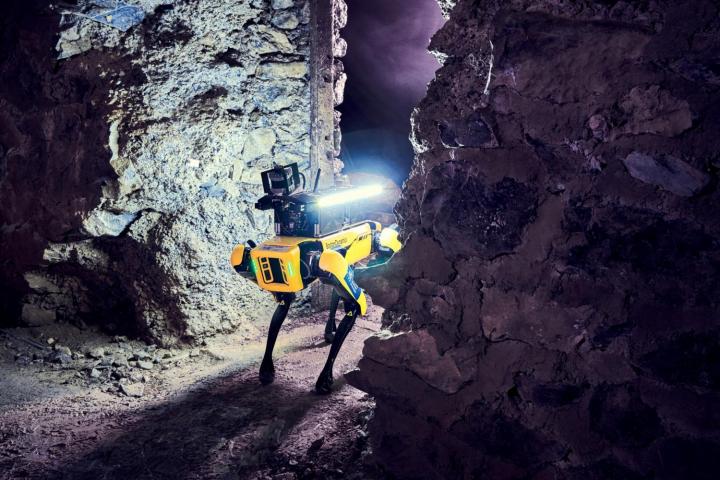Although research on computational robotics begins in building of the Faculty of Electrical Engineering, it is necessary to test the deployment of robots outside the laboratory. Real data is above gold - and in this case it is literally true. To test signal modelling algorithms, the researchers chose the Halíře exploration mine, which was originally used for gold mining. Its unique diamond-shaped profile allowed the team to test whether the algorithms would hold up in a real-world environment. Some advanced signal propagation properties related, for example, to the waveguiding of the tunnels, also came into play.
"Our robots can autonomously explore underground spaces, search for predefined objects or construct a 3D model of the environment," says Jan Bayer from the FEL CTU, describing the robots' abilities and adding what obstacles they encountered during their experiments. "Performing these tasks in a coordinated way with multiple robots is difficult because radio signals propagate underground in a complex way."
Martin Zoula, a PhD student from FEL CTU, says: "During the autumn experiments, we tested the possibilities of predicting signal quality with machine learning models that can be computed directly during the deployment of robots underground, and thus improve their behaviour during exploration."
During the mine survey, an accurate 3D model of the mine was also created, which will be used for promotion by the Regional Museum in Jílové u Prahy, under which the mine falls. Since April, the Halíře adit, together with the St. Joseph and St. Anthony of Padua adits, has been open to the public. Although the robots will be back in the laboratory, visitors can look forward to an unusual experience of exploring this mid-20th century exploration mine adit.
"I welcome and support the cooperation with FEL CTU. In addition to the unusual experience of having the mine visited by robotic dogs, we have the results of our research available to use in the museum's gold exhibition on an interactive panel," says Šárka Juřinová, the museum's director.
The project in the Halíře adit mine is a continuation of the explorations and competitions in which robots from Faculty of Electrical Engineering have participated in recent years in underground spaces. In 2022, a walking SPOT with a robotic arm explored the Prague collectors. In 2021, the team of CTU Faculty of Electrical Engineering won silver medal in the "Robot Olympics" in the virtual competition, and finished sixth in the real robot competition. A line-up of wheeled, tracked, flying and quadruped robots took part in the finals of the three-round competition organised by the US Department of Defense agency DARPA at an underground complex in Kentucky, USA, on behalf of FEL. The limits of the capabilities of current autonomously controlled robotic systems in a GPS-free environment were also tested in June 2021 in the environment of the Býčí skála cave in the Moravian Karst.
Photos and videos: https://drive.google.com/drive/folders/1uj-BPklo_FLWNCd0nyeCy_M6Ou_1izqX?usp=share_link

